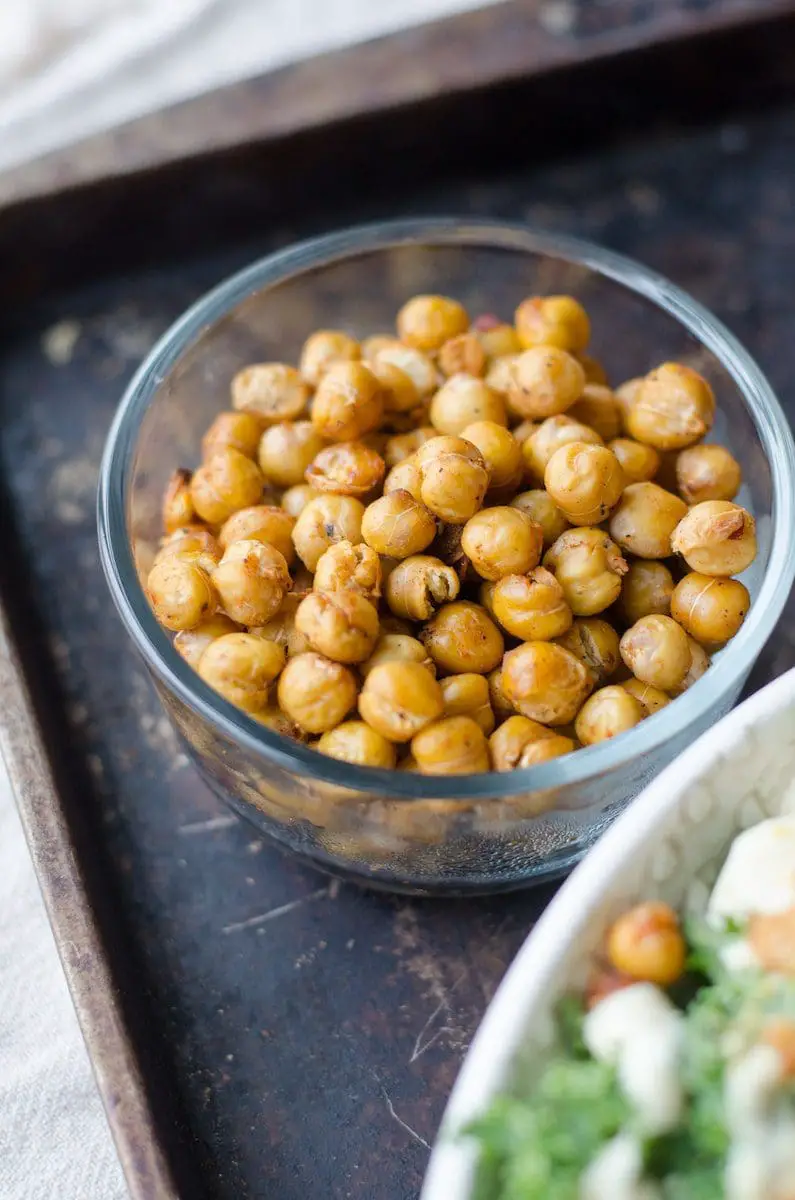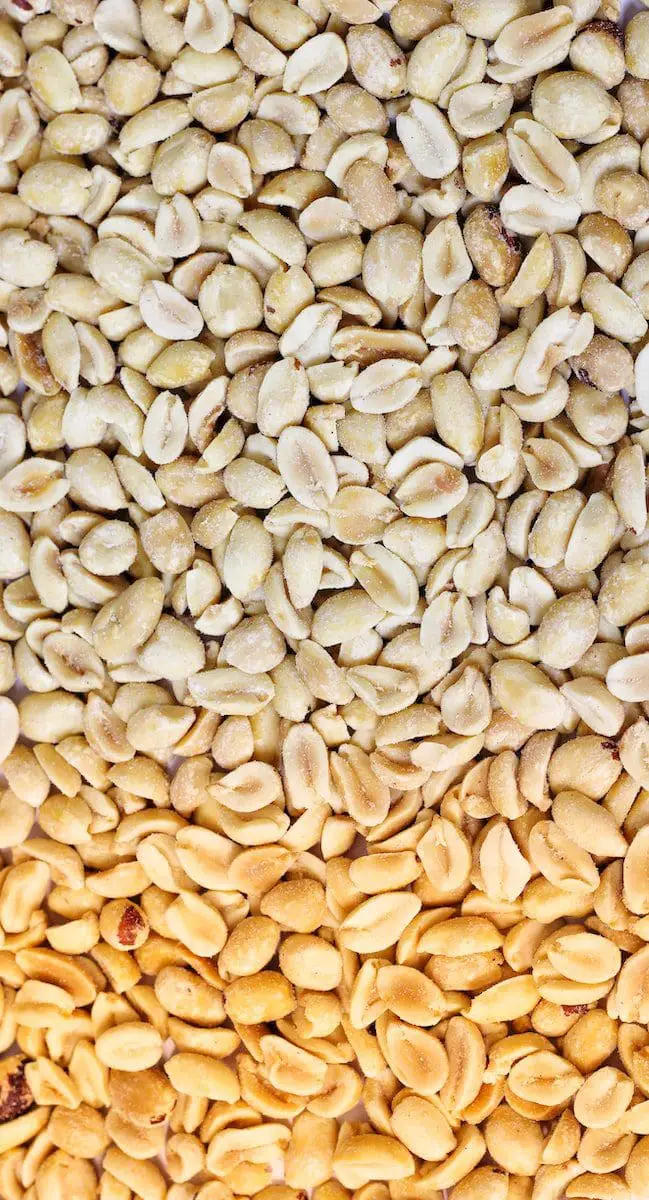“Nothing will benefit human health and increase the chances for survival of life on Earth as much as the evolution to a vegetarian diet.”― This is quoted by a very popular personality Albert Einstein, and it just shows how visionary he was.
Now, when various people are converting from their normal food plans to vegetarian and vegan diets, Many have started to value the taste and nutritious value of plant-based products. Chickpeas and peanuts are both plant-based proteins used in many foods, from a dish or snacks to full-meal dinners.
Key Takeaways
- Chickpeas are a type of legume with a nutty taste, while peanuts are a type of nut.
- Chickpeas are higher in fiber and protein than peanuts, while peanuts are higher in fat and calories.
- Chickpeas are commonly used in dishes like hummus and salads, while peanuts are eaten as a snack or used in peanut butter.
Chickpea vs Peanut
The difference between Chickpea and Peanut is that Chickpea is much better for people who want to have a lower amount of calories as it has a much lower amount of it. Peanut is much higher in calories. Also, Chickpea is also lower in saturated fat than Peanut.

Chickpea is a grain that has been used for centuries now. It can be used in a variety of dishes starting with a light salad, curry, bread, and many more. They are popular in food dishes that are used for dieting periods. They are high in protein but quite low in saturated fat.
Peanut is a very filling legume that is filled with a series of vitamins and minerals. Yes, the protein-based snack is filled with fats, but more with good fats that are beneficial for the human body than the amount of saturated fat. The crop is also used to make Peanut oil which is very useful for making different dishes.
Comparison Table
| Parameters of Comparison | Chickpea | Peanut |
|---|---|---|
| Other name | Garbanzo beans or Egyptian peas. | Groundnut |
| Carbohydrates | Chickpea has more percentage of carbohydrates. | Peanut has fewer carbohydrates than Chickpea. |
| Calories | Chickpea is much lower in calories compared to Peanut. | Peanut is very high in the number of calories. To be approx 258% more than Chickpeas. |
| Source of | Iron, vitamin C, etc. | Vitamin B6, pantothenic acid, etc. |
| Protein | Chickpea has less amount of protein in it. | Peanut has a larger amount of protein. |
What is Chickpea?
Chickpea is a legume crop that is used in many food dishes. It is the most important ingredient for making the well-known snack “hummus.” The crop is of two types, which are Desi Chickpea and Kabul Chickpea. The legume is not only filled with fibre, protein, vitamins, and minerals but with other nutrients as well.
The seeds of the crop have to go through the process of grinding to a powder out of them and use it while making another type of food dish, mainly falafel. Since the product can be used opposite to meat products, it is very much used in dishes where the meat can be interchanged with Chickpea. The product is also widely used as an animal crop.
It is recommended to people who want to lose weight or overall who want a balanced diet as it is seen that the consumption of the crop decreases the chance of diseases. The consumption of raw chickpeas is not at all advisable as it will be quite bad for the health since the uncooked product will have toxins in it.

What is Peanut?
Peanut is a very popular crop, mainly grown for the production of its seed. It is very high in protein alongside other important sources like healthy fats, vitamin A, vitamin E, niacin, and many other nutrients. There are said to be a total of four varieties of Peanuts.
Their taste might be similar to some nuts like almonds, but contrary to its name, the crop doesn’t belong to the nut category. It is a legume. Some people are allergic to the crop, and thus, in many types, we see that on food packaging, it is written that the product contains peanuts as a precaution. Now, even many food places clarify peanut allergy before cooking.
The crop has many other uses, for example, the shells, protein part, and its oil. Peanut oil is a useful ingredient in cooking numerous types of dishes, a popular choice for salads. Small handfuls of them that will fill the need to eat anything quite fast.
| # | Preview | Product | |
|---|---|---|---|
| 1 |

| PLANTERS Sweet and Spicy Peanuts, Party Snacks, Plant-Based Protein, After School Snack, Quick... | Check Price on Amazon |

Main Differences Between Chickpea and Peanut
- Chickpea has more percentage of carbohydrates in the product in comparison to the number of carbohydrates in Peanut.
- Chickpea is lower in the percentage of saturated fat. Peanut, on the contrary, is quite high in level of saturated fat in comparison to Chickpea.
- There are two types of Chickpea, while Peanut is divided into four categories. Chickpea has Desi Peanut and Kabuli Peanut types. Peanut has Runners, Spanish, Valencias, and Virginias as its form.
- Chickpea is much lower in calories than Peanut. If we take a 100gm example, chickpeas would have 164 calories while peanuts would have 587 calories.
- Even though both of the food products are rich in protein. Peanut has more protein in its crop than Chickpea.

- http://eprints.icrisat.ac.in/2728/
- https://www.sciencedirect.com/science/article/abs/pii/S0140673608606595



As an individual interested in plant-based diets, I found the comprehensive descriptions of chickpeas and peanuts to be incredibly valuable. It’s essential to understand the nutritional and culinary aspects of these foods.
I share your views, Connor. The detailed descriptions of chickpeas and peanuts were very informative. It’s important to understand the significance of these foods in different dietary preferences.
I completely agree, Connor. The article provided valuable insights into the nutritional aspects of chickpeas and peanuts, especially in the context of plant-based diets.
I appreciate the emphasis on the nutritional benefits of chickpeas and peanuts. It’s valuable to know how these foods differ in terms of calories, carbohydrates, and protein content.
The detailed descriptions of chickpeas and peanuts were enlightening. It’s important to consider the nutritional benefits of these foods when making dietary choices.
I couldn’t agree more, Kimberly. Understanding the nutritional content of food is crucial for maintaining a healthy lifestyle. This comparison was very helpful.
Thank you for the detailed descriptions of chickpeas and peanuts. As someone interested in nutrition, I found the breakdown of their nutritional parameters to be highly informative.
I share your sentiments, Hollie. The nutritional descriptions of chickpeas and peanuts will undoubtedly aid individuals in making informed dietary decisions.
Absolutely, Hollie. The article provided valuable insights into the nutritional composition of chickpeas and peanuts. It’s crucial to understand these distinctions for maintaining a balanced diet.
I found the information about chickpeas and peanuts to be very educational. The detailed comparisons provided a holistic understanding of the nutritional characteristics of these foods.
Indeed, Tina. Understanding the nutritional differences between chickpeas and peanuts is crucial for making informed dietary choices. The detailed comparison enhanced our knowledge of these foods.
The article’s emphasis on the differences between chickpeas and peanuts was enlightening. It’s essential to understand the nutritional disparities between these foods for dietary considerations.
I couldn’t agree more, Grant. The detailed comparisons of chickpeas and peanuts were incredibly insightful. It’s crucial for individuals to be aware of the nutritional nuances of these foods.
The focus on the nutritional comparisons between chickpeas and peanuts was enlightening. It’s valuable to know the differences in carbohydrates, calories, and protein content of these foods.
I found the information in this article very interesting, especially the comparison between chickpeas and peanuts. It’s important to know the nutritional value of different foods in order to have a balanced diet.
Absolutely, Peter. It’s crucial to understand the nutritional content of the foods we consume. I appreciated the breakdown of the key differences between chickpeas and peanuts as well.
The information provided about the uses of chickpeas and peanuts in various food preparations was fascinating. It’s beneficial to know the versatility of these ingredients.
Absolutely, Joanne. I found the details about the use of chickpeas and peanuts in food preparations to be very informative. I appreciated the emphasis on their versatility.
I agree, Joanne. Learning about how chickpeas and peanuts are used in different dishes and snacks was quite insightful. It’s important to understand their versatility in cooking.
Thank you for providing such a detailed comparison. It’s fascinating to learn about the differences in carbohydrate, calorie, and protein content of chickpeas and peanuts.
I completely agree. As someone interested in nutrition, I found the detailed breakdown of nutritional parameters to be very insightful. It’s essential to be aware of the nutritional composition of the food we consume.
I agree, Moore. The comparison table was very informative and made it easy to see the distinctions between chickpeas and peanuts.